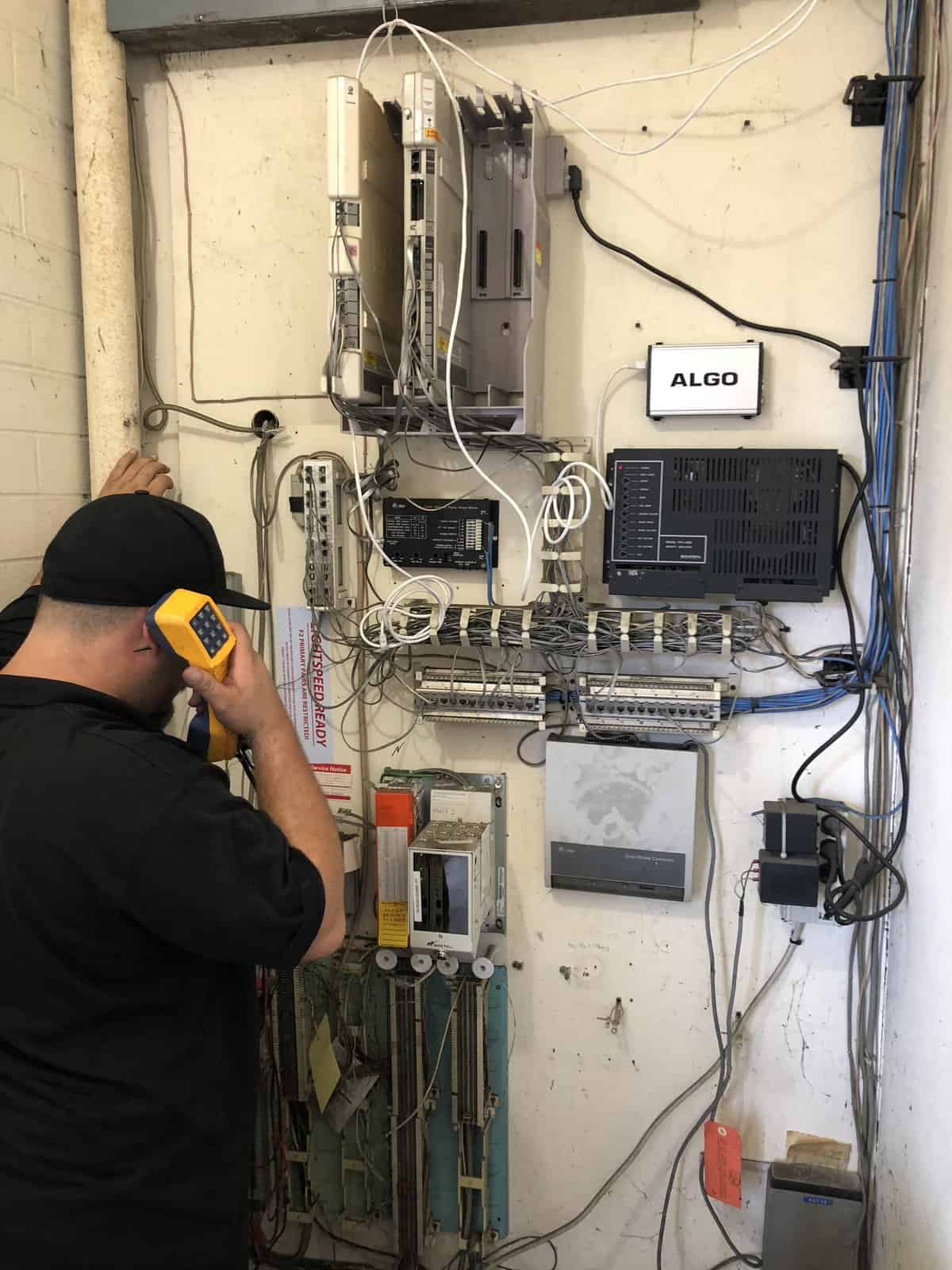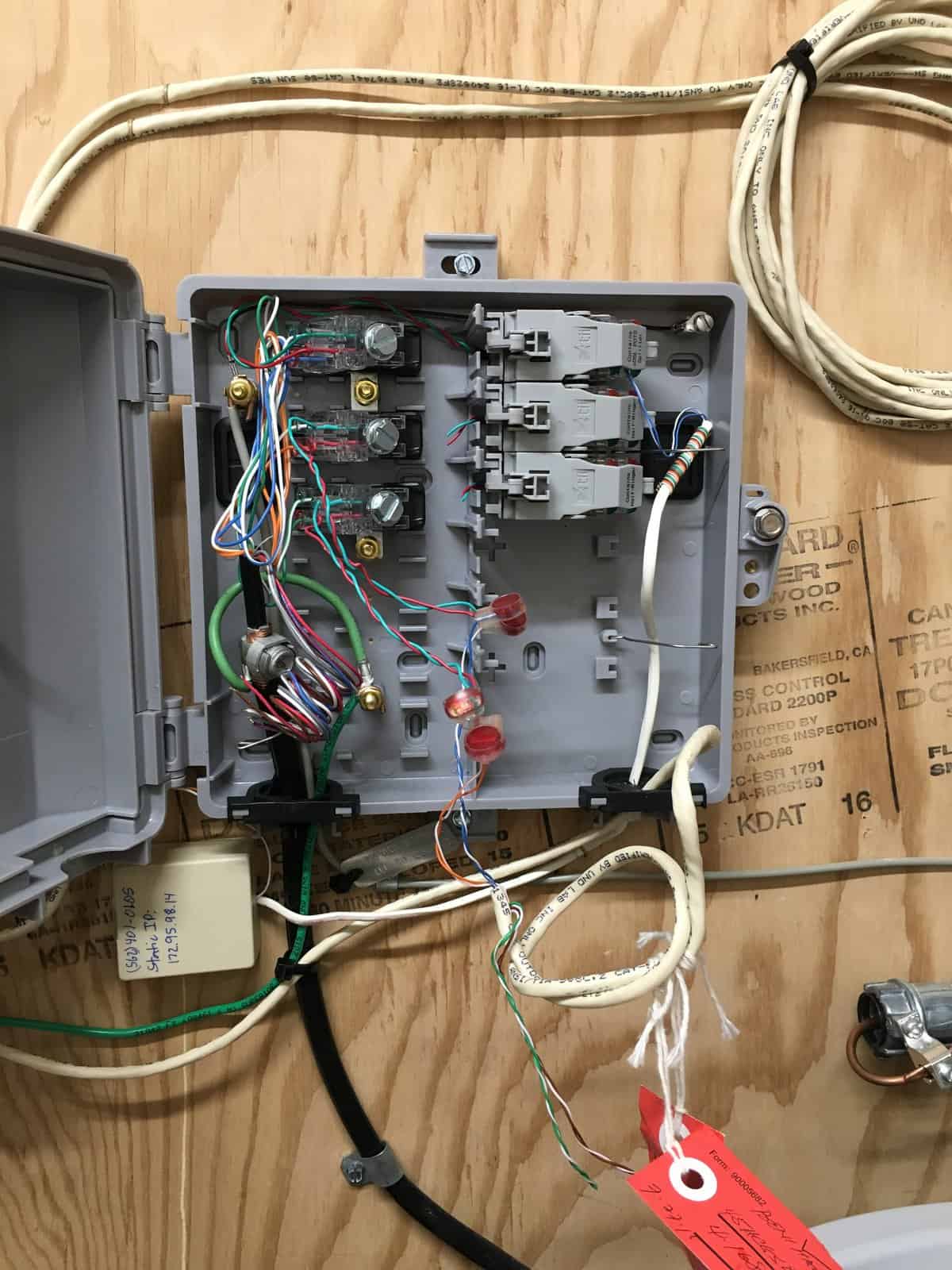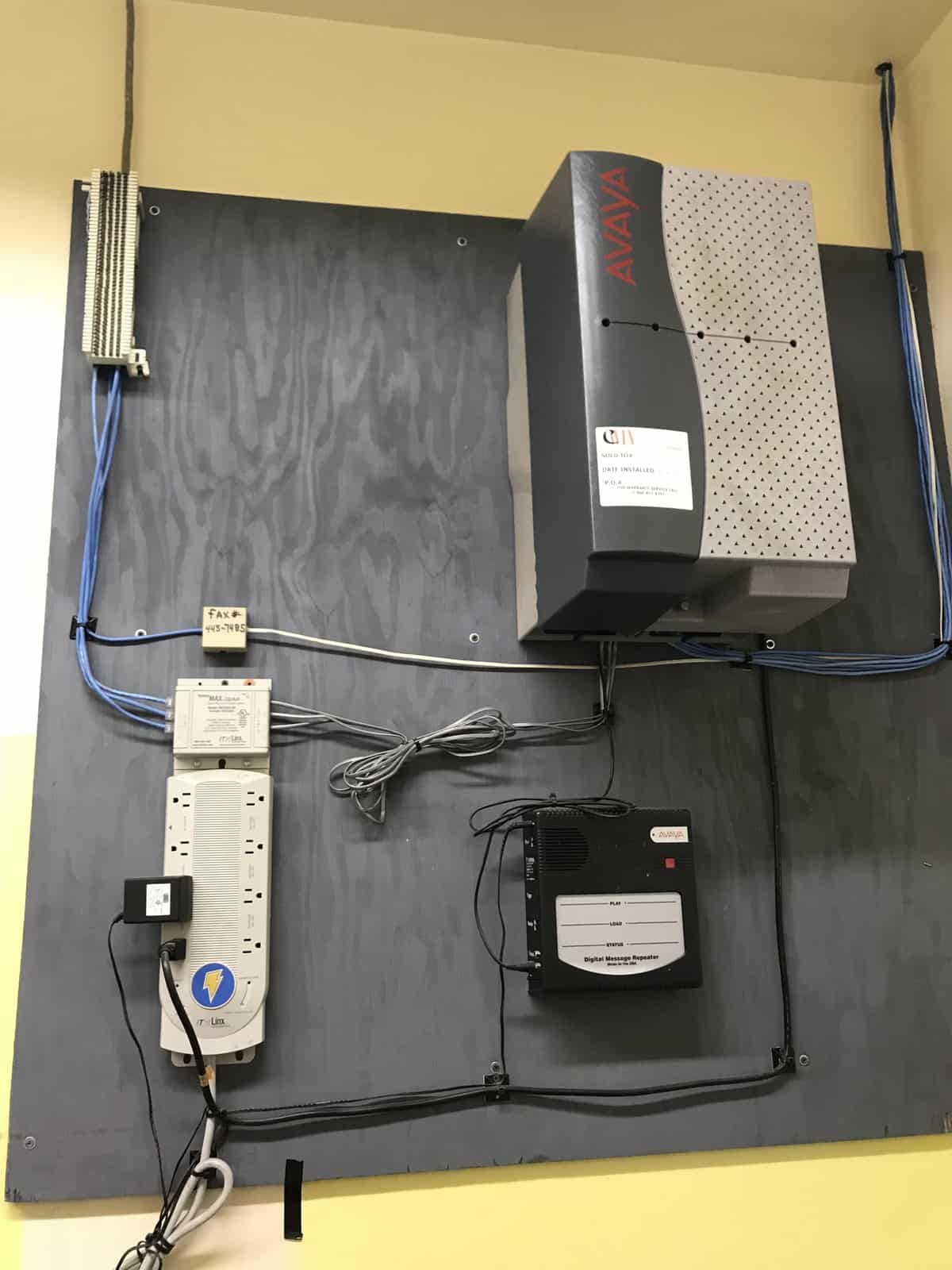TELECOMM
Phone Systems - Embracing the Digital Revolution with Versatile Analog/Digital Interfaces
OUR SOLUTIONS
In today’s fast-paced and interconnected world, effective communication is crucial for the success of any business. One of the key components of communication infrastructure is the telephone system. Over the years, telephone systems have evolved from analog to digital technologies, offering businesses more advanced features and capabilities. In this article, we will explore the key differences between digital and analog phone systems and why upgrading to a digital system can benefit your business. Analog phone systems have been in use for many decades and are based on analog signal transmission. In this system, the voice signals are converted into electrical pulses, which are then transmitted over copper wires to the receiving end. Analog systems are known for their simplicity and reliability. They have been the backbone of communication for a long time, but they have certain limitations that can hinder business operations.


Introduction
Telecommunication is the process of transmitting information over a distance using technology like telephone lines, cable, or satellite. It plays a crucial role in connecting people and businesses, allowing for efficient communication and access to information and resources from around the world.
Telecommunication systems come in various forms, including voice communication, data communication, multimedia communication, satellite communication, and wireless communication. These systems utilize different technologies to transmit and receive information, such as analog and digital signals, wired and wireless networks, and various types of devices.
We will explore the basics of telecommunication for small businesses. We will discuss the importance of using telecommunication services, different types of telecommunication systems, how to choose the right system for your business, setting up a telecommunication system, cost considerations, the benefits of a robust system, security measures, future-proofing, common challenges, and frequently asked questions.
Understanding telecommunication basics is essential for small businesses as it enables them to effectively communicate with customers, collaborate internally, and stay connected in the digital age. By implementing the right telecommunication system, small businesses can enhance their productivity, efficiency, and overall success.
Understanding Telecommunications in Small Businesses
Telecommunications in small businesses refer to the network and systems used to transmit and receive information within the organization and with external parties. These systems enable small businesses to communicate internally among employees and externally with customers, suppliers, and other stakeholders. The telecommunications network comprises various components, including devices like telephones, computers, routers, and servers, as well as the infrastructure like cables, wireless connections, and internet service providers. Small businesses rely on telecommunications systems to ensure smooth and efficient communication, including the transmission of information, which is crucial for their day-to-day operations and overall success.
The Importance of Telecommunications
Telecommunications play a vital role in the success of small businesses. It enables them to access a wide range of telecommunications services, such as voice calls, video conferencing, data transmission, and internet connectivity. These services are essential for effective communication with customers, suppliers, and employees.
Small businesses often rely on wide area networks (WANs) to connect multiple locations and facilitate data transmission between them. WANs ensure that information can be easily shared across different departments and branches, enabling seamless collaboration.
Data transmission is a critical aspect of telecommunications for small businesses. It allows for the efficient transfer of data, such as customer orders, inventory information, and financial records. Reliable and fast data transmission is essential for maintaining smooth business operations and providing excellent customer service.
In summary, telecommunications services, including wide area networks and efficient data transmission, are crucial for small businesses. They enable effective communication and collaboration, which are essential for success in today’s interconnected world.
Different Types of Telecommunication Systems
There are different types of telecommunication systems that small businesses can choose from depending on their specific needs. Telephone networks are one of the most common types of telecommunications systems, also known as telecom. They allow for voice calls to be made and received using landlines or mobile phones. Small businesses can choose from various telephone service providers based on their requirements and budget.
Mobile phones are another popular telecommunication system for small businesses. These devices provide wireless connectivity and allow for voice calls, text messaging, and internet access. Mobile phones offer flexibility as they can be used both inside and outside the office, enabling employees to stay connected wherever they are.
Service providers play a crucial role in telecommunication systems by offering the necessary infrastructure and connectivity. Small businesses can choose from a range of service providers based on factors such as coverage, reliability, and pricing.
Overall, small businesses have the option to choose from different telecommunication systems, including telephone networks and mobile phones, to meet their communication needs. Service providers play a vital role in providing the necessary connectivity for these systems.


Choosing the Right Telecommunication System
Choosing the right telecommunication system is essential for small businesses to ensure efficient communication and connectivity. Considerations include the size and nature of the business, its communication needs, and budget.
The telecommunications network should be able to support digital, which allows for faster and more reliable data transfer compared to analog systems. Digital transmission converts data into binary code, which can be transmitted as discrete signals.
Carrier waves are used in telecommunication systems to carry the digital signals. They modulate the digital signals to a higher frequency, allowing for long-distance transmission without significant loss of data quality.
By evaluating the telecommunications needs of the business and considering factors like digital transmission and carrier wave technology, small businesses can select the right telecommunication system that meets their requirements.
Evaluating Your Business Needs
Evaluating your business needs is crucial when choosing a telecommunication system. Start by assessing the telecommunications services required by your business, such as voice calls, video conferencing, data transfer, and internet connectivity. Identify the specific features and capabilities that are essential for your business operations.
Consider the scale of your business and whether you need connectivity across multiple locations. If your business operates in different cities or regions, a wide area network (WAN) may be necessary to connect the various branches and facilitate efficient communication and data transfer.
Evaluate the availability and reliability of the public internet in your area. The public internet can be a cost-effective option for small businesses, but ensure that the connection speed and reliability meet your requirements.
By thoroughly evaluating your business needs, you can make an informed decision when choosing a telecommunication system that best suits your requirements and budget.
Comparing Telecommunication Solutions
When comparing telecommunication solutions for your small business, consider the following factors:
- Service providers: Research and compare different service providers in your area. Look for reliable providers with good customer reviews and a wide range of services.
- Digital modulation: Digital modulation is a key technology used in telecommunication systems. It allows for the efficient transmission of digital data over analog channels. Compare the digital modulation techniques used by different telecommunication solutions to ensure optimal data transmission.
- Analog signal: While digital transmission is becoming more prevalent, analog signals are still used in some telecommunication systems. Consider whether your business requires analog signal compatibility for specific applications.
- Cost: Compare the costs associated with different telecommunication solutions, including equipment, installation, and ongoing service charges. Consider both upfront and long-term costs to make an informed decision.
By comparing these factors among different telecommunication solutions, you can choose the one that best meets your business needs, offers reliable service, and fits within your budget.
Setting Up Your Telecommunication System
Setting up a telecommunication system for your small business involves several steps to ensure smooth installation and efficient operation. Consider the following basics:
- Plan the infrastructure: Assess your business needs and plan the telecommunication infrastructure accordingly. Determine the number of phones, computers, and other devices that need to be connected.
- Install equipment: Install telecommunication equipment, such as telephones, routers, switches, and cabling. Ensure that the installation is done correctly to avoid connectivity issues.
- Integrate with existing infrastructure: If your business already has an existing telecommunication system or infrastructure, make sure the new system integrates seamlessly. This may require configuring settings and connecting to the existing network.
By following these installation basics and considering your existing infrastructure, you can set up a telecommunication system that meets your business needs while minimizing disruption to your operations.
Installation Basics
Installing a telecommunication system for your small business involves several key steps:
- Plan the network: Before installation, create a comprehensive plan for your telecommunications network. Determine the layout of the network, including the location of devices, network cables, and connection points.
- Install network cables: Connect devices using network cables, ensuring that they are properly installed and terminated. Use appropriate cable management techniques to keep cables organized.
- Configure devices: Set up and configure telecommunication devices, such as phones, routers, switches, and modems. Ensure that these devices are properly connected to the network and have the necessary settings configured.
- Test the network: After installation, perform comprehensive testing to ensure that the network is functioning correctly. Test voice communication, data communication, and internet connectivity to verify that all devices can communicate with each other.
By following these installation basics, you can set up a telecommunication system that supports both data and voice communication, enabling efficient communication within your small business.
Integrating with Existing Infrastructure
Integrating a new telecommunication system with your small business’s existing infrastructure requires careful planning and consideration. Here are some key factors to keep in mind:
- Evaluate the existing infrastructure: Assess the current telecommunications infrastructure in your small business. Determine the type of network connections, such as wired or wireless, and the equipment and devices currently in use.
- Consult with experts: Seek advice from professionals who specialize in telecommunication systems. They can help evaluate your existing infrastructure and recommend the best approach for integration.
- Consider scalability: Evaluate the scalability of your telecommunication system. Ensure that it can accommodate future growth and expansion of your small business.
- Explore fiber optics: Consider the benefits of fiber optic connectivity. Fiber optic cables offer faster data transmission and more bandwidth compared to traditional copper cables. Assess the feasibility and cost of implementing fiber optics in your existing infrastructure.
By considering these factors and consulting with experts, you can integrate a new telecommunication system seamlessly with your small business’s existing infrastructure, ensuring enhanced communication and connectivity.
Cost Considerations for Small Businesses
When implementing a telecommunication system for your small business, it is important to consider the various costs associated with the system. These costs can include:
- Initial setup costs: This includes the purchase of telecommunication equipment, installation fees, and any infrastructure upgrades required to support the system.
- Ongoing maintenance: Telecommunication systems require regular maintenance to ensure optimal performance. This can include software updates, equipment repairs, and periodic system checks.
- Upgrades: As technology advances, it may be necessary to upgrade your telecommunication system to take advantage of new features and improve performance.
By considering these costs upfront and budgeting for them, small businesses can ensure that they have the necessary funds to implement and maintain an efficient telecommunication system.
Initial Setup Costs
The initial setup costs of a telecommunication system for small businesses can vary depending on the specific requirements and scale of the business. Some of the key costs to consider include:
- Telecommunications network equipment: This includes the cost of telephones, routers, switches, and other hardware required for the system.
- Infrastructure setup: If your business requires the installation of new infrastructure, such as cabling or networking equipment, there will be associated costs for materials and labor.
- Connectivity fees: Depending on the type of telecommunication system chosen, there may be ongoing connectivity fees charged by service providers.
- Installation fees: If you choose to hire a professional to install the telecommunication system, there will be associated installation fees.
It is important to carefully evaluate these initial setup costs and budget accordingly to ensure that your small business can afford the required telecommunication system.
Ongoing Maintenance and Upgrades
Ongoing maintenance and upgrades are essential for the smooth operation of a telecommunication system. Some key considerations include:
- Regular maintenance: Telecommunication systems require regular maintenance to ensure optimal performance. This can include software updates, equipment checks, and troubleshooting any issues that may arise.
- Compliance with regulations: Stay informed about regulations set by organizations like the International Telecommunication Union and the Federal Communications Commission. Compliance with these regulations is crucial to ensure the legality of your telecommunication system.
- Upgrades: As technology advances, it may be necessary to upgrade your telecommunication system to take advantage of new features, improve security, or enhance performance. Upgrades can include hardware updates, software updates, and infrastructure improvements such as implementing optical fiber connectivity.
By investing in ongoing maintenance and upgrades, small businesses can ensure that their telecommunication system remains efficient, secure, and up to date with the latest technologies.
Benefits of a Robust Telecommunication System
Implementing a robust telecommunication system offers several benefits for small businesses:
- Improved communication with customers: A reliable telecommunication system allows businesses to communicate effectively with customers, enhancing customer service and satisfaction.
- Enhanced internal collaboration: A robust telecommunication system facilitates communication and collaboration among employees, enabling smooth workflow and efficient teamwork.
- Efficient data transmission: Digital transmission enables fast and reliable data transfer, allowing small businesses to exchange information quickly and accurately.
- Connectivity over long distances: A robust telecommunication system enables small businesses to communicate and collaborate with stakeholders located in different cities or countries, expanding their reach and potential customer base.
By investing in a robust telecommunication system, small businesses can improve communication, collaboration, and data transfer, leading to increased productivity and overall success.
Improved Communication with Customers
A robust telecommunication system enables small businesses to improve communication with their customers in several ways:
- Efficient voice communication: With a reliable telecommunication network, small businesses can make and receive voice calls, ensuring effective and clear communication with customers. This allows for real-time feedback, immediate problem resolution, and building strong customer relationships.
- Seamless data transmission: A robust telecommunication system facilitates fast and accurate data transmission, enabling small businesses to share important information with their customers. This can include sending product updates, order confirmations, and tracking information.
- Carrier wave technology: Carrier waves used in telecommunication systems ensure the efficient transmission of voice and data signals. They modulate the digital signals onto carrier waves, allowing for long-distance communication without significant signal degradation.
By leveraging a robust telecommunication system, small businesses can enhance their communication capabilities and provide better service to their customers, ultimately leading to increased customer satisfaction and loyalty.
Enhanced Internal Collaboration
A robust telecommunication system also benefits small businesses by enhancing internal collaboration among employees:
- Seamless communication: A reliable telecommunication system enables employees to communicate seamlessly, whether they are in the same office or working remotely. This facilitates quick decision-making, efficient problem-solving, and effective teamwork.
- Local area networks: Small businesses can utilize local area networks (LANs) to connect their employees within a specific office or location. LANs enable file sharing, centralized access to resources, and smooth communication among team members.
- Digital modulation: Digital modulation technology used in telecommunication systems allows for efficient transmission of digital data. It ensures that data is accurately transmitted and received, enabling employees to collaborate effectively using digital tools such as email, instant messaging, and video conferencing.
By fostering enhanced internal collaboration through a robust telecommunication system, small businesses can boost productivity, creativity, and overall efficiency in their day-to-day operations.
Security Measures for Your Telecommunication System
Implementing security measures is crucial to protect your telecommunication system and ensure the privacy and integrity of your data. Consider the following security measures:
- Protecting against cyber threats: Small businesses should invest in firewalls, antivirus software, and regular security updates to safeguard against cyber threats such as hacking, malware, and data breaches.
- Ensuring data privacy: Implement measures to secure sensitive data, such as customer information and financial records. This can include encryption, access controls, and regular data backups.
- Compliance with regulations: Stay informed about data privacy regulations and compliance requirements specific to your industry. Adhering to these regulations helps ensure the security and privacy of your telecommunication system.
By implementing these security measures, small businesses can protect their telecommunication systems from cyber threats, safeguard sensitive data, and maintain the trust of their customers.
Protecting Against Cyber Threats
Protecting your telecommunication system against cyber threats is essential for the security of your small business. Consider the following measures:
- Secure your telecommunications network: Implement firewalls and intrusion detection systems to monitor and control network traffic. This helps prevent unauthorized access and potential cyber attacks.
- Use encryption: Encrypt sensitive data transmitted over your telecommunication system. Encryption converts data into an unreadable format, ensuring that only authorized parties can access and understand it.
- Secure protocols: Use secure transmission protocols, such as Secure Sockets Layer (SSL) or Transport Layer Security (TLS), for communication over the internet. These protocols encrypt data during transmission, protecting it from interception and tampering.
By implementing these measures, small businesses can protect their telecommunication systems from cyber threats, ensuring the security and confidentiality of their data.
Ensuring Data Privacy
Data privacy is a critical consideration for small businesses when it comes to their telecommunication systems. Some key steps to ensure data privacy include:
- Know your data: Understand what types of data your business collects, stores, and transmits through your telecommunication system. Identify sensitive data, including customer information, financial records, and intellectual property.
- Implement access controls: Restrict access to sensitive data by implementing strong user authentication and authorization protocols. This ensures that only authorized individuals can access and modify data.
- Compliance with regulations: Stay informed about data privacy regulations specific to your industry and location. Ensure that your telecommunication system complies with these regulations, such as the General Data Protection Regulation (GDPR) in the European Union.
By prioritizing data privacy and taking appropriate measures, small businesses can protect sensitive data, maintain customer trust, and comply with relevant data privacy regulations.
Future-Proofing Your Telecommunication System
Future-proofing your telecommunication system is essential to ensure it remains relevant and efficient as technology advances. Consider the following strategies:
- Stay ahead of technological advances: Continuously monitor and evaluate emerging technologies and trends in the telecommunication industry. Stay informed about advancements like 5G, cloud computing, and Internet of Things (IoT).
- Scalability: Choose a telecommunication system that can scale as your small business grows. Consider the ability to accommodate increased data traffic, additional devices, and expanding network coverage.
- Flexibility and adaptability: Opt for a system that can easily integrate with new technologies and evolving business needs. This allows for seamless upgrades and ensures compatibility with future telecommunication advancements.
By future-proofing your telecommunication system, you can ensure that your small business remains technologically competitive, adaptable to change, and ready to embrace new opportunities.
Staying Ahead of Technological Advances
Staying ahead of technological advances is crucial for small businesses to maximize the benefits of their telecommunication systems. Consider the following strategies:
- Stay informed about emerging technologies: Continuously monitor industry trends and advancements, such as 5G, cloud computing, and virtual reality. Evaluate how these technologies can enhance your telecommunication system and benefit your small business.
- Invest in future-proof infrastructure: Choose telecommunication infrastructure that can accommodate emerging technologies. For example, opt for routers with advanced features and scalability to support future network demands.
- Embrace data compression: Utilize data compression techniques to optimize data transfer and minimize bandwidth usage. This can improve network efficiency and reduce costs associated with data transmission.
By staying ahead of technological advances, small businesses can leverage the latest telecommunication technologies to enhance communication, improve productivity, and gain a competitive edge in the market.
Scalability for Growing Businesses
Scalability is crucial for growing businesses to ensure that their telecommunication system can accommodate increased demands. Consider the following factors:
- Bandwidth requirements: Evaluate your current and future bandwidth requirements. Choose a telecommunication system that provides sufficient bandwidth to support your business needs as it grows.
- Scalable infrastructure: Opt for telecommunications systems that can easily scale to accommodate additional devices, increased data traffic, and expanded network coverage. This flexibility ensures that your system can grow alongside your business.
- Future-proof features: Choose systems with features that support scalability, such as the ability to add new users or devices without significant disruptions or hardware upgrades.
By prioritizing scalability, small businesses can ensure that their telecommunication system can support their growth and future business needs, minimizing the need for costly infrastructure changes.
Common Challenges and Solutions
Small businesses may face various challenges when it comes to their telecommunication systems. Here are some common challenges and potential solutions:
- Navigating technical difficulties: Technical issues like connectivity problems, software glitches, and hardware malfunctions can disrupt telecommunication systems. Employ troubleshooting techniques, seek assistance from service providers, or consult IT professionals to resolve these issues promptly.
- Handling downtime and outages: Unplanned downtime can impact business operations and customer service. Implement backup solutions, such as redundant connections or backup power supplies, to minimize the impact of outages.
By proactively addressing these challenges and implementing appropriate solutions, small businesses can ensure reliable telecommunication systems and minimize disruptions to their operations.
Navigating Technical Difficulties
Small businesses may encounter various technical difficulties with their telecommunication systems. Here are some tips for navigating these challenges:
- Troubleshooting: In the event of connectivity or performance issues, follow troubleshooting steps provided by your service provider or system documentation. This can help identify and resolve common problems.
- Seek assistance from service providers: If troubleshooting does not resolve the issue, contact your service provider for assistance. They can provide technical support and guidance specific to your telecommunication system.
- Consult technical support professionals: For complex technical issues, consider consulting IT professionals who specialize in telecommunication systems. Their expertise can help diagnose and resolve more challenging problems.
By being proactive in troubleshooting and seeking assistance when necessary, small businesses can navigate technical difficulties with their telecommunication systems and minimize disruptions to their operations.
Handling Downtime and Outages
Downtime and outages can have significant implications for small businesses. Here are some measures to handle such situations:
- Business continuity planning: Develop a business continuity plan that outlines steps to be taken in the event of a telecommunication system outage. This can include backup communication methods, alternative work locations, and emergency communication protocols.
- Disaster recovery solutions: Implement disaster recovery solutions to minimize the impact of telecommunication system outages. This can involve redundant connections, backup power supplies, or cloud-based communication platforms.
- Backup solutions: Regularly back up data to mitigate the risk of data loss during system outages. This ensures that important information can be quickly restored once the system is back online.
By implementing these measures, small businesses can minimize the impact of telecommunication system downtime and outages, ensuring continuity of operations and minimal disruption to their business activities.
Conclusion
Telecommunication is the backbone of any small business. From enhanced communication with customers to improved internal collaboration, a robust telecommunication system is vital. It ensures data privacy, protects against cyber threats, and future-proofs your operations. By choosing the right system that meets your business needs, you can navigate challenges like technical difficulties and downtime effectively. Keep your system updated and scalable for growth. Understanding the importance of telecommunications and making informed decisions can set your business on a path to success in this digital age.
Frequently Asked Questions
What Are the Initial Steps to Take When Choosing a Telecommunication System?
When choosing a telecommunication system, it is important to evaluate your business needs, research different service providers, analyze costs, compare features, and consult with experts. These initial steps will help you make an informed decision that meets your specific requirements.
The VoIP phone system offers so many advantages that can significantly improve your business operations. Currently, it is one of the most effective and reliable communication systems in corporate and private settings. VOIP- enabled telephones are an integral part of the support system for businesses growth. The Voice Over Internet Protocol (VOIP) was introduced to meet the needs of business owners for more reliable and effective communication with employees, partners, and clients. However, You can leverage the effectiveness of this system to maintain excellent communication with all your business associates.

